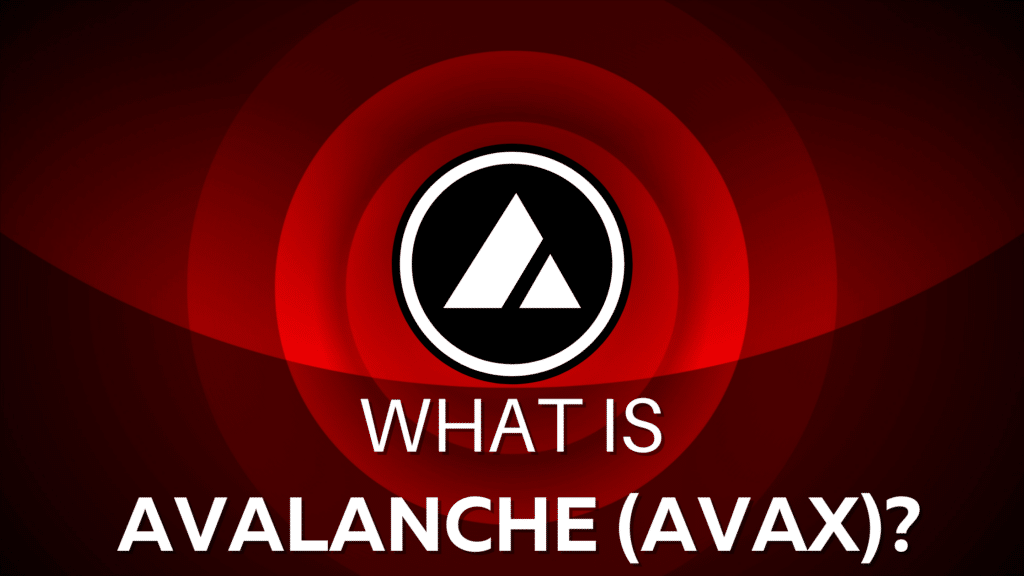What is Avalanche?
Avalanche is a blockchain network created as an alternative to Ethereum. Its native cryptocurrency is AVAX.
The Long Definition
Avalanche is a blockchain created to rival Ethereum. The network aims to be a faster, cheaper, and more scalable alternative to Ethereum.
Avalanche’s native cryptocurrency is known as AVAX. It is used to pay the network’s transaction fees and in staking. It’s also used as a basic unit of account between subnets on the network.

History of Avalanche
Ethereum, through smart contracts, powers decentralized finance (DeFi). DeFi is a developing sector in blockchain that offers a host of crypto-based financial services. These include lending, borrowing, and even insurance.
However, Ethereum has several drawbacks – slow transactions and high network fees. To critics, these significantly hinder DeFi’s progress. Many rival blockchains have been developed to try to solve Ethereum’s problems. Avalanche is one such blockchain.
Avalanche was created by Ava Labs, a blockchain development studio founded in 2018. The project was launched in 2020 as the “Ethereum killer.”
Like Ethereum, it has smart contract support. This allows developers to build and deploy decentralized applications (dApps) on the network. However, to beat Ethereum, it was created with a focus on three key areas; speed, cost, and scalability. It aims to be a faster, more scalable, and more affordable alternative.
How Does Avalanche Work?
Avalanche uses its own unique variation of the proof-of-stake (PoS) consensus mechanism. The biggest blockchain, Bitcoin, uses proof-of-work (PoW). And at the time of Avalanche’s creation, Ethereum also used proof-of-work (PoW). It has since moved to proof-of-stake (PoS) thanks to the Bellatrix Upgrade of September 2022.
PoW relies on powerful computers to solve complex math puzzles. This makes it slow, energy-intensive, and expensive.
PoS, on the other hand, relies on validators to secure the system. These are users who stake (pledge) their crypto. They are responsible for verifying blocks. In Avalanche, the network requires validators to stake at least 2,000 AVAX tokens. These cannot be withdrawn for as long as the user wishes to remain a validator.
Compared to PoW, PoS is faster, cheaper, and more scalable. Avalanche’s PoS protocol allows it to support up to 4,500 transactions per second (tps). This is much faster than Ethereum’s 30 tps (even after the merge) and Bitcoin’s 4tps.

What is AVAX
AVAX is Avalanche’s native crypto asset. It is a utility token, which means that it serves some core functions on its blockchain. Such as:
- Transaction fees: Users sending crypto assets over the network pay transaction fees in AVAX.
- Securing the network: Users can stake their AVAX for an opportunity to become a validator. Validators play a crucial role in securing the network and are rewarded for it.
- Unit of account: AVAX is used as a basic unit of account between the blockchains (called subnets) deployed on Avalanche.
AVAX is also a speculative asset whose value changes with time. Therefore, investors trade it at crypto exchanges with the hopes of making a profit.
How Does Avalanche Compare to Other Blockchains?
The Avalanche blockchain is unique in that it consists of three built-in blockchains. These are:
- X-Chain: This is the ‘exchange chain’ where transactions occur on the Avalanche network.
- P-Chain: The ‘platform chain’ where users stake their AVAX. Validation activities happen here.
- C-Chain: The ‘contract chain’ with smart contract capabilities. It’s where smart contracts and dApps are secured. It’s also compatible with the Ethereum Virtual Machine (EVM), allowing for some level of interoperability between Avalanche and Ethereum.

Other unique Avalanche features are:
- Coin creation rate: AVAX holders determine how fast new coins are minted. Overall though, AVAX’s maximum supply is capped at 720 million coins.
- Transaction fees: Transaction fees on the Avalanche network are burned (removed from circulation). In other networks, a portion of the transaction fees is paid to miners.
- Validators: In most PoS protocols, validators risk losing their staked crypto if they’re careless or malicious. But in Avalanche, they’re not penalized. This is seen by many as a negative
According to Coinmarketcap, at the time of this writing, Avalanche has a 0.63% market dominance. This puts it at #15 in the crypto market.
How to Use Avalanche
You’ll need AVAX to get into the Avalanche network. If it’s your first time, you’ll have to use a centralized exchange (CEX) to buy AVAX with crypto before transferring it to a wallet. Avalanche has its own web wallet for AVAX. Once you’re in, you’ll be able to access and interact with the network’s DeFi protocols.
You can also store your AVAX in MetaMask through the C-Chain. This will allow you to use the token and other ERC-20 tokens in the same ecosystem.
Want to join the Dypto journey? Follow our socials!